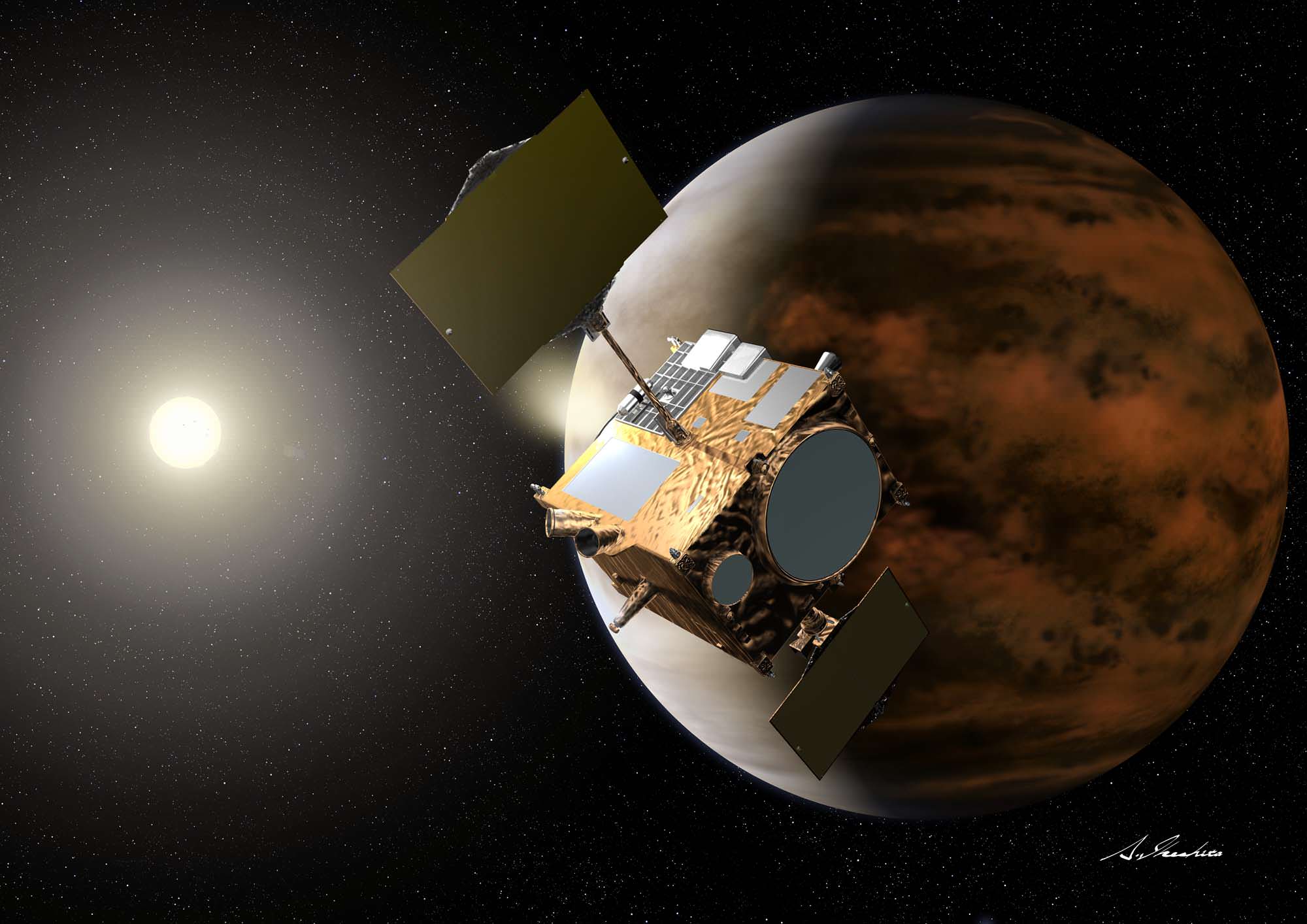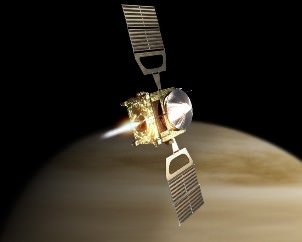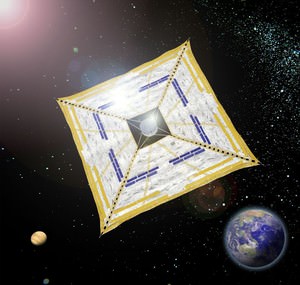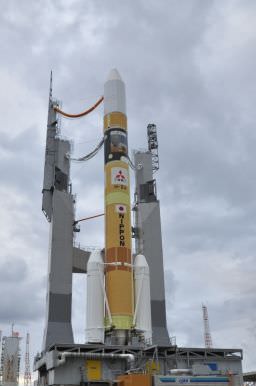[/caption]
While JAXA is still trying to get an exact handle on the problems that the Akatsuki probe sent to Venus encountered, there is a little bit of news leaking out. JAXA held a press conference last night, and the Yomiuri Shimbun newspaper has a brief recap of the conference. During some of the systems checks on the probe, it also took a few images of Venus, and many of the instruments on the probe appear to be working okay – it’s the engine that’s having the most problems.
Here’s what is known so far: Akatsuki’s engine did perform a burn to slow it down, but 152 seconds into the burn the fuel pressure dropped and the probe became unbalanced. Because the retrofiring of the rockets failed to slow down the probe enough for Venus to capture it, it was unable to enter into orbit around the planet, and then went into safe mode.
As to what caused the sudden drop in fuel, JAXA currently suspects that there is a damaged pipe or valve that reduced the flow of helium into the engine, but that is still speculative. As the engine burns propellant (Akatsuki uses a hydrazine/nitrogen tetroxide engine), helium flows into the tank to maintain the pressure. Something failed in the helium injection flow, and precipitated a drop in internal tank pressure, reducing the flow of propellant and causing the engines to stop burning.
The ceramic nozzle of the engine is also thought to have been damaged by the misfiring, which may make the task of trying to get the probe to Venus when the chance comes around again in six years a daunting one.

JAXA is planning on doing some tests on the ground to maybe come to a workaround of this problem. There seems to be plenty of fuel left, which is good news, but the damaged nozzle is not. Maybe they’ll call in some Hayabusa team members, and pull it through.
The Christian Science Monitor reported yesterday that there is some speculation that something may have struck the probe, though this most recent press conference from JAXA makes no mention of it.
Also, Emily Lakdawalla at The Planetary Society Blog reprinted some tweets translated from Japanese that summarize details from the press conference, as well as the Yomiuri Shimbun article.
Source: Yomiuri Shimbun, ISAS, the Planetary Society Blog,





